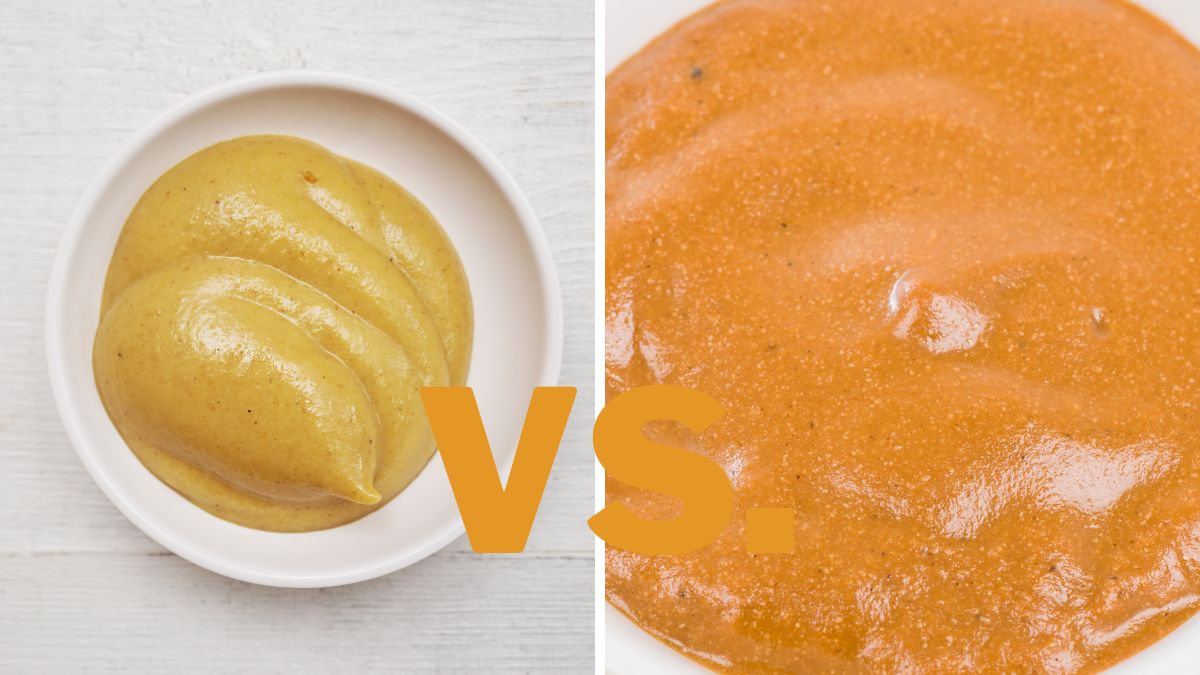Dijon vs. French Mustard: Differences & Uses

Since Dijon and French mustard have very similar origins, i.e., they are both French; many mistake them for the same product. Well, they’re not. I take the differences between mustard kinds very seriously, so I decided to tell you a bit more about it. So, what are the differences between Dijon and French mustard?
Dijon mustard is made from brown or black mustard seeds and white wine or wine vinegar. French mustard refers to a variety of regional mustard styles in France, ranging from mild and creamy to spicy and grainy, depending on the region. Their uses are interchangeable in many recipes.
While Dijon mustard is a specific type of mustard, French mustard covers several types of mustard made in France. I like to make my dishes just right, using the right condiments, so I know the significance of these differences. So, in this article, I will tell you all about Dijon and French mustard and how to use them. Let’s get started with their ingredients.
Ingredients
Dijon mustard is made from brown or black mustard seeds, white wine or wine vinegar, water, and salt. It originated in the Dijon region in France, hence the name. This type of mustard is smooth and creamy because the seeds are ground into powder and then mixed with the rest of the ingredients.
On the other hand, French mustard typically refers to the classic yellow mustard commonly found in France. This yellow mustard is common in the rest of the world as well, so you have definitely had it, even though it may not have been French.
In a nutshell, French mustard is yellow-seed mustard made in France, and it has variations depending on the region and manufacturer. It is usually made from yellow or white mustard seeds, vinegar, water, salt, and sometimes additional spices like turmeric for color.
Here’s a great video in which you can learn more about Dijon and French mustard in general:
Taste and Appearance
Dijon mustard is very particular, taste-wise. I love its pungency and its tanginess. It is definitely a strong and assertive condiment and isn’t to be mixed into just anything.
It is also slightly hot, with a discrete peppery note. Compared to regular yellow mustard, it is less pungent but definitely more flavorful. It has a pale yellow color and a creamy texture.
French mustard is milder and less assertive than Dijon mustard, but that isn’t to say that it is tasteless. It is still very much flavorful, with a noticeable tang and slight heat. I especially like its ability to transform and adapt to almost any combination.
It has a bright yellow color, much more impressionable than that of Dijon mustard. Some variants are very smooth and creamy, but Dijon mustard is richer in this aspect since it is slightly thicker.
Uses

Both Dijon and French mustard are very versatile, and they offer a wide range of possibilities. Even though their use is limited only to your preference, and you can have them with whatever you like, they do have their intended uses.
Dijon works excellently in dressings, marinades, and sauces. I use it when I want to add depth and tanginess to my food, and I have it in sandwiches, roasted meats, dipping sauces, and roasted veggies.
It also pairs well with cheese, charcuterie, and poultry, so you can use it as a sauce with these types of snacks. I also love it with fried goodies — it gives a dash of richness.
On the other hand, French mustard doesn’t require anything fancy. You can have it with barbecue, burgers, hot dogs, or just plain fries. It is also a great way to level up your breakfast sausages or BLT sandwiches. Moreover, it does an amazing job in pastries.
Are Dijon Mustard and French Mustard Interchangeable?
Dijon and French mustard definitely are interchangeable, but Dijon mustard is a better French mustard substitute than vice-versa.
If you use Dijon mustard in hot dogs, for example, it will add depth of flavor and create a more complex profile. If you use French mustard with roasts, it won’t deliver the magic of the Dijon mustard. It will undoubtedly add flavor, but none of the tang that Dijon mustard delivers.
Still, since the differences are minor, you can use one instead of the other, but I recommend using them as intended to be able to get the best of both.
Which one do you use more, and for what? Excited for your take in the comments below!
